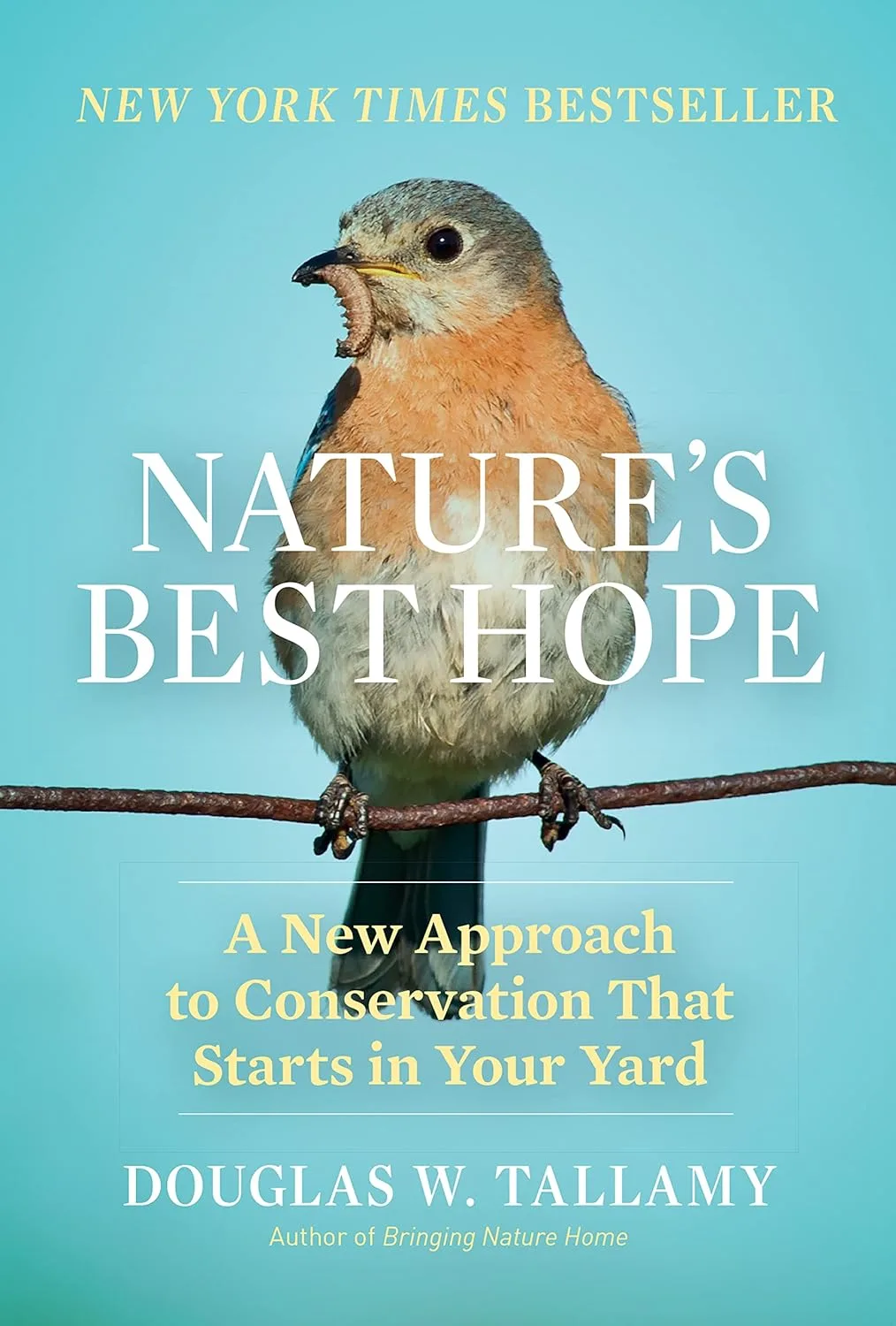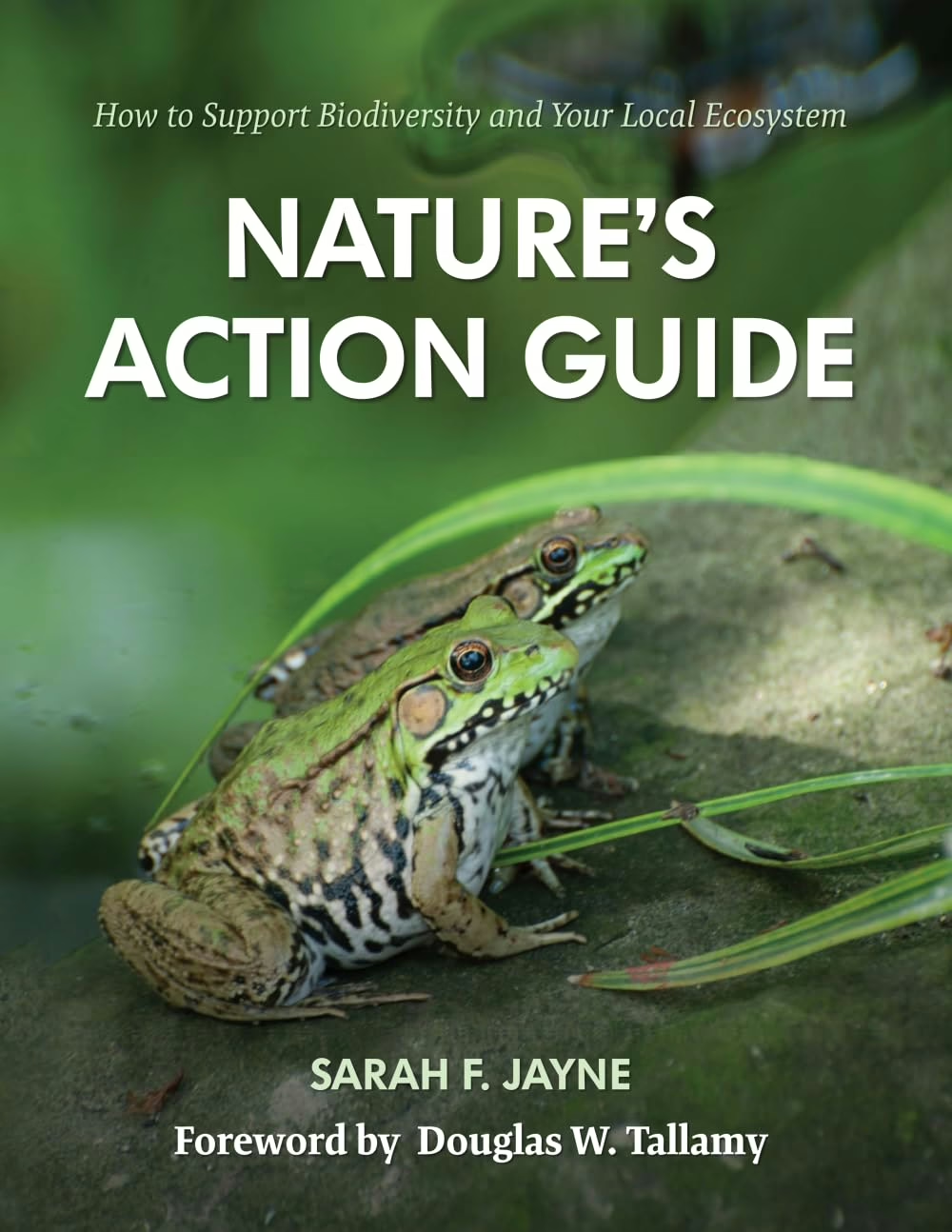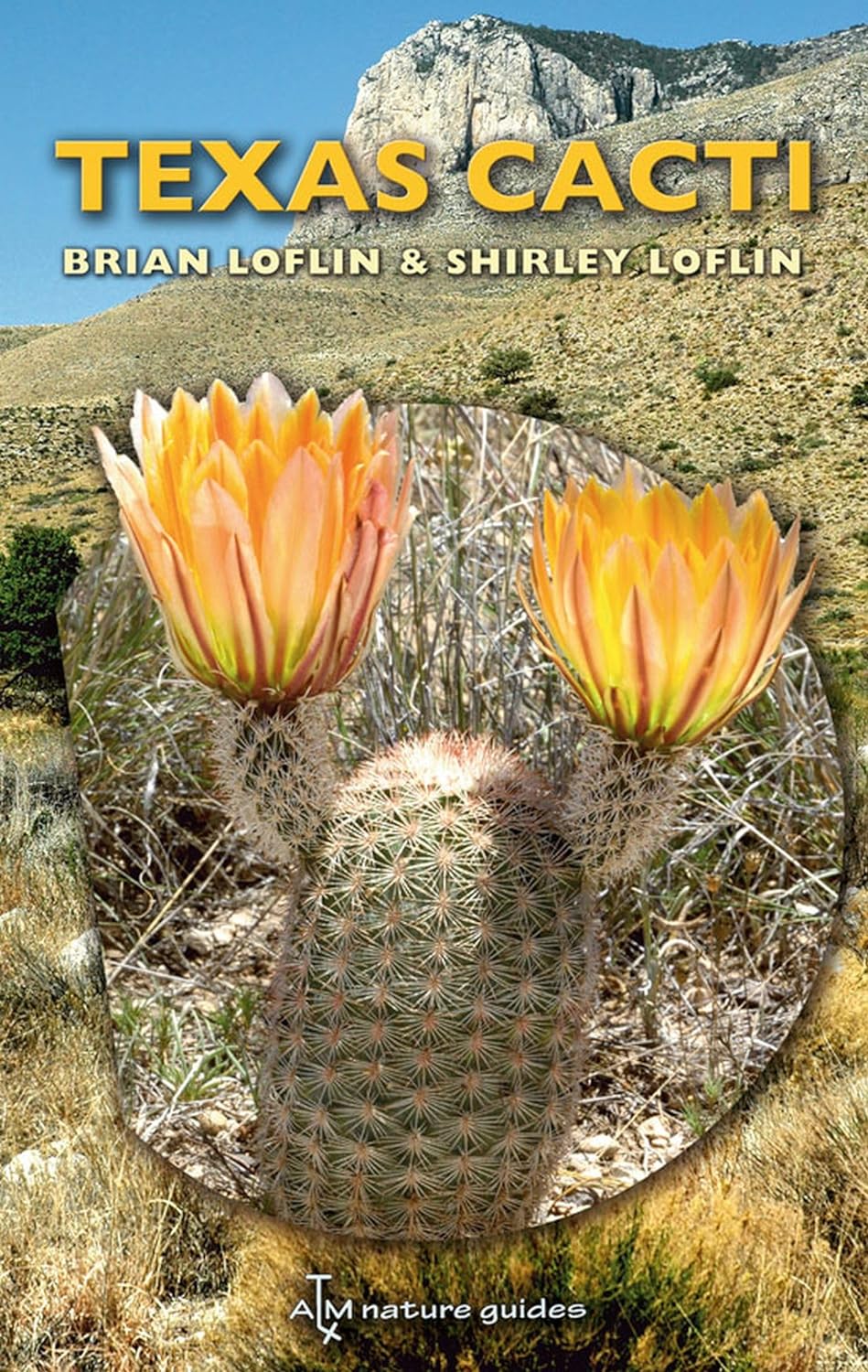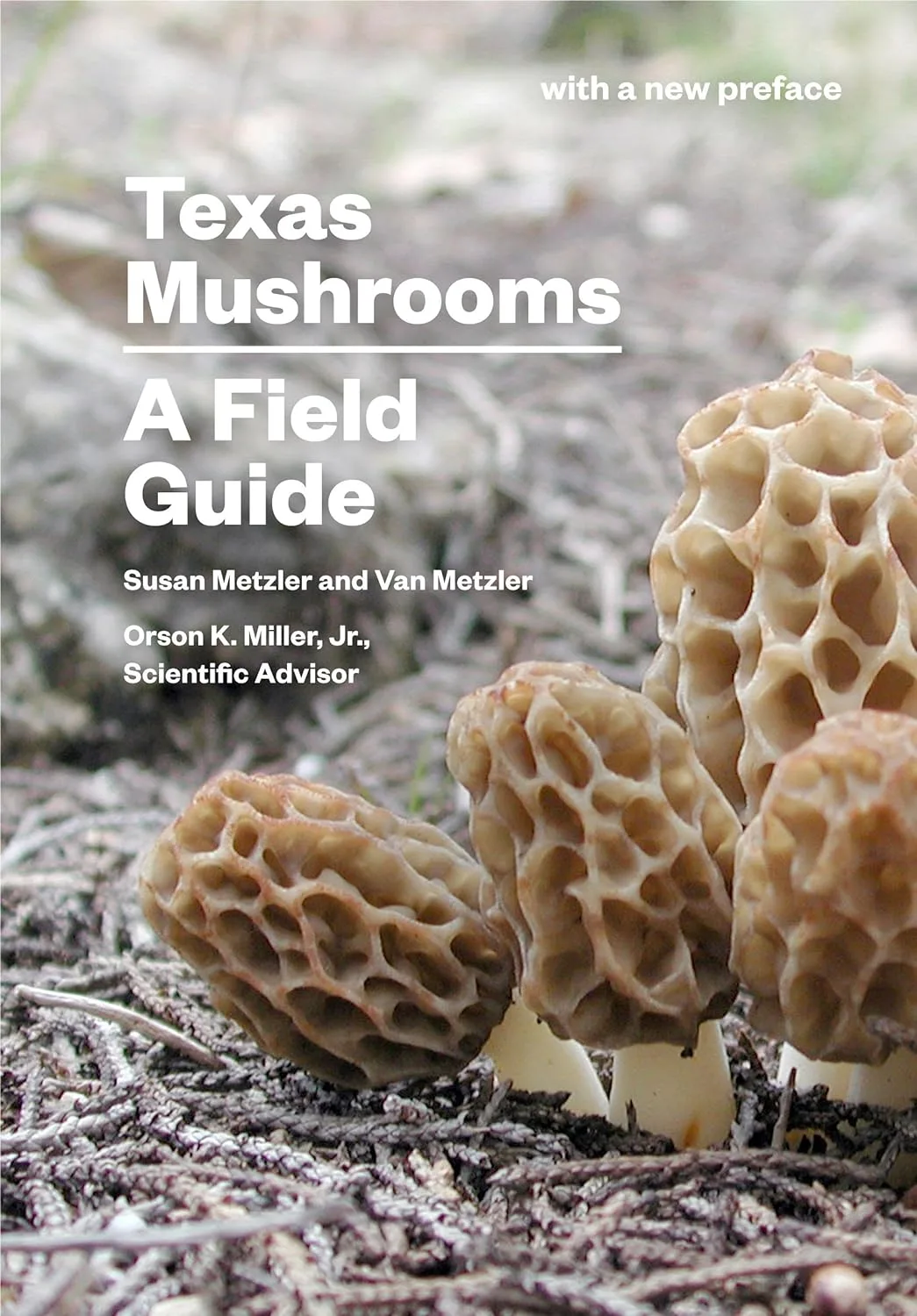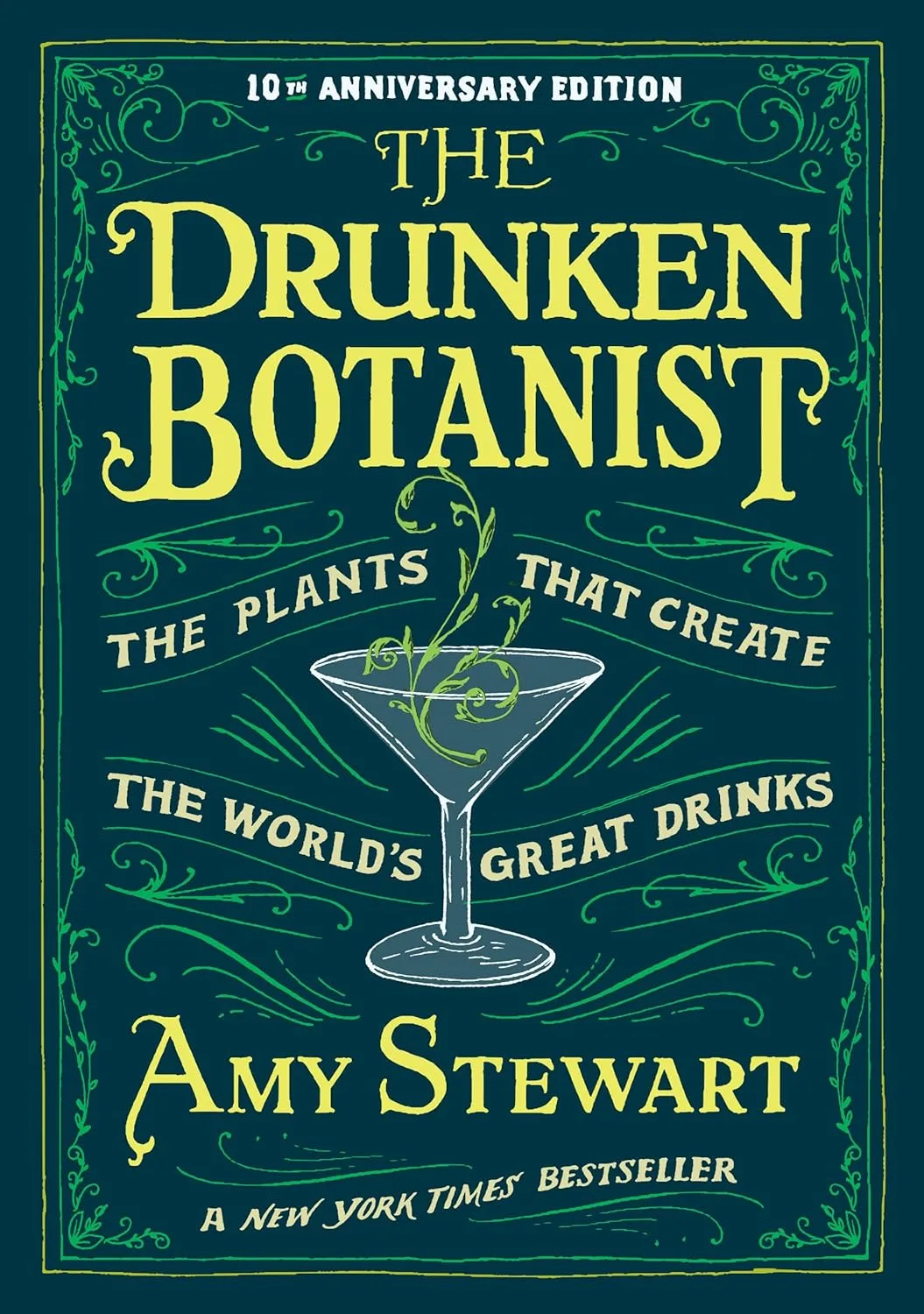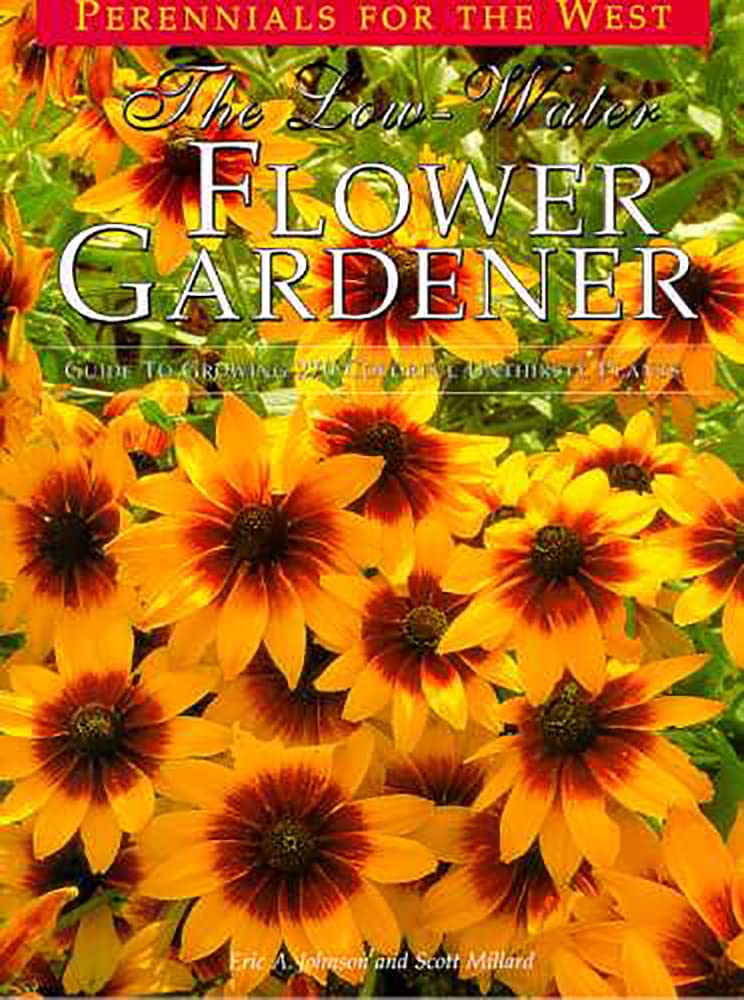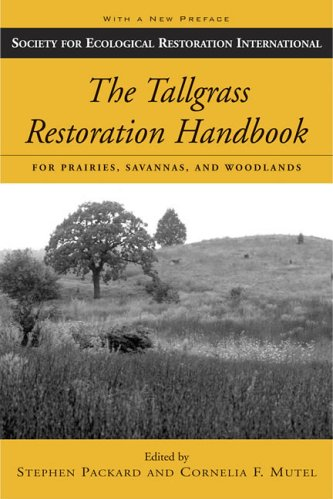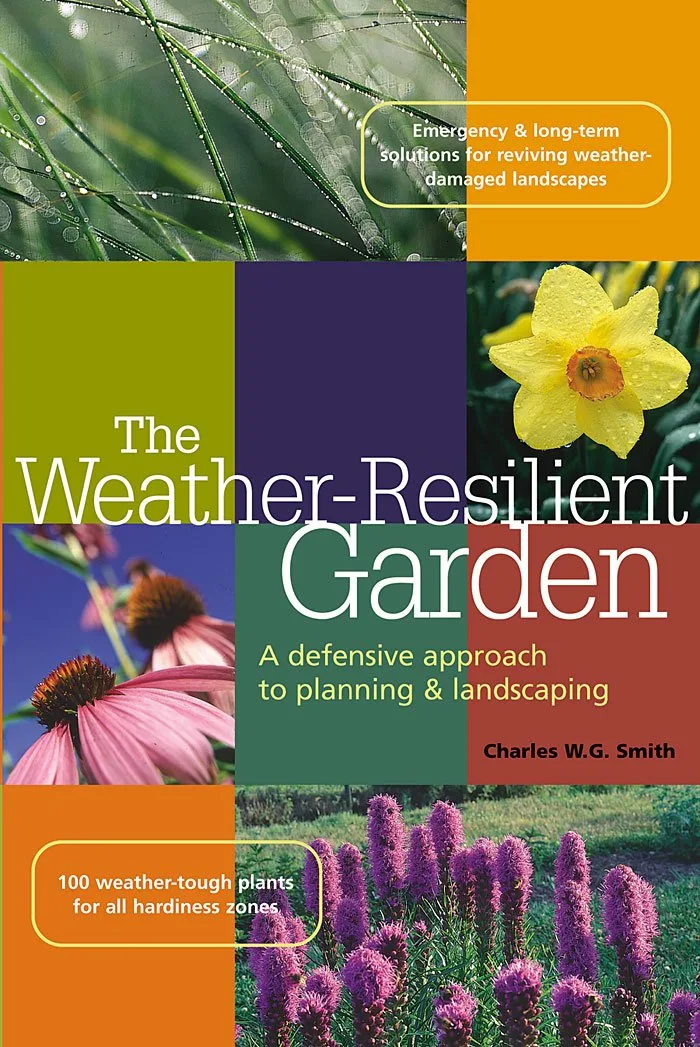
Welcome to our Virtual Bookstore! Enjoy browsing our selection of books about the Native Plants of Texas. We are offering this virtual bookstore through an Amazon Associates partnership. A portion of all purchases made through the Amazon links on this page will support the Native Plant Society of Texas. Thank you in advance for your support!
Our bookstore has raised thousands of dollars to support Texas native plants thanks to you!

Explore top picks and trending titles!
Expand these to see some featured books.
Best Sellers
How Can I Help?: Saving Nature with Your Yard
Douglas W. Tallamy
In How Can I Help?, Tallamy tackles the questions commonly asked at his popular lectures and shares compelling and actionable answers that will help gardeners and homeowners take the next step in their ecological journey. Topics range from ecology, evolution, biodiversity and conservation to restoration, native plants, invasive species, pest control, and supporting wildlife at home. Tallamy keenly understands that most people want to take part in conservation efforts but often feel powerless to do so as individuals. But one person can make a difference, and How Can I Help? details how.
Whether by reducing your lawn, planting a handful of native species, or allowing leaves to sit untouched, you will be inspired and empowered to join millions of other like-minded people to become the future of backyard conservation.
Read Review...
The Texas Native Plant Primer: 225 Plants for an Earth-Friendly Garden
Andrea DeLong-Amaya
From Texas’s leading native plant organization comes an accessible and colorful guide to planting native for home gardeners at every level of expertise.
Do you want a garden that makes a real difference? Choose plants native to our Texas. The rewards will benefit you, your yard, and the environment—from reducing maintenance tasks to attracting earth-friendly pollinators such as native birds, butterflies, and bees. Native plant expert Andrea DeLong-Amaya and the world famous Lady Bird Johnson Wildflower Center make adding these superstar plants easier than ever before, with proven advice that every home gardener can follow.
This incomparable sourcebook includes native ferns, grasses, wildflowers, perennials, vines, shrubs, and trees. It’s everything you need to know to create a beautiful and beneficial garden.
Read Review...
Gardening With Prairie Plants: How To Create Beautiful Native Landscapes
Sally Wasowski and Andy Wasowski
Filled with practical advice and detailed information, this indispensable guide to prairie gardening shows readers how to choose space, plan a garden, select plants and flowers, and much more.
Read Review...
Native Plants for Southwestern Landscapes
Judy Mielke
For gardeners who want to conserve water, the color, fragrance, shade, and lush vegetation of a traditional garden may seem like a mirage in the desert. But such gardens can flourish when native plants grow in them. In this book, Judy Mielke, an expert on Southwestern gardening, offers the most comprehensive guide available to landscaping with native plants. Writing simply enough for beginning gardeners, while also providing ample information for landscape professionals, she presents over three hundred trees, shrubs, vines, grasses, groundcovers, wildflowers, cacti, and other native plants suited to arid landscapes.
The heart of the book lies in the complete descriptions and beautiful color photographs of plants native to the Mojave, Sonoran, and Chihuahuan desert regions of the southwestern United States and northern Mexico. Mielke characterizes each plant and gives detailed information on its natural habitat, its water, soil, light, temperature, and pruning requirements, and its possible uses in landscape design.
Read Review...
Bringing Nature Home: How You Can Sustain Wildlife with Native Plants
Douglas W. Tallamy
This book is a call to arms for gardeners who are searching for a better way to plant, maintain, and enjoy their gardens. The author argues that traditional landscaping practices are harmful to the environment and unsustainable in the long run. He advocates for a new approach to gardening that works with nature, not against it. The book provides practical advice on how to create a low-maintenance, sustainable garden that is both beautiful and beneficial to the environment. It includes in-depth profiles of native plants that are well-suited to different regions of the United States, as well as tips on how to design a garden that is both aesthetically pleasing and ecologically sound.
Read Review...
Nature’s Best Hope
Douglas W. Tallamy
Nature’s Best Hope shows how homeowners everywhere can turn their yards into conservation corridors that provide wildlife habitats. Because this approach relies on the initiatives of private individuals, it is immune from the whims of government policy. Even more important, it’s practical, effective, and easy—you will walk away with specific suggestions you can incorporate into your own yard.
Read Review...
Native Texas Gardens: Maximum Beauty Minimum Upkeep
Sally Wasowski and Andy Wasowski
This time-proven classic explores 600 gardens that make the most of the Lone Star State’s home-grown native greenery.
Read Review...
Native Texas Plants: Landscaping Region by Region
Sally Wasowski and Andy Wasowski
Landscape designs for every ecoregion and terrain found across Texas.
Read Review...
Newest Additions
Nature’s Action Guide: How to Support Biodiversity and Your Local Ecosystem
Sarah F. Jayne
The scale of the looming biodiversity crisis can feel overwhelming, yet our individual actions do have an impact. Are you ready to transform your yard into a thriving, biodiverse habitat? Nature’s Action Guide: How to Support Biodiversity and Your Local Ecosystem, a companion to Doug Tallamy’s Nature’s Best Hope, highlights fifteen urgent actions that you can take to create healthy, functioning ecosystems wherever you live or work.
Read Review...
Grass Isn’t Greener: The Everyday Conservationist’s Guide to Bringing Nature to Your Yard
Danae Wolfe
Rooted in twenty practical steps that anyone can take starting today, Grass Isn’t Greener demonstrates how small changes in your yard or garden can create lasting impact for the planet: from leaving your leaves to selecting eco-friendly holiday decorations; from eliminating light pollution to attracting wildlife; from saving seeds to devoting even a small patch of lawn to native plants. With easy-to-follow advice and real-life examples, conservation educator Danae Wolfe will help you appreciate the new life you’ve attracted to your yard. A companion for new homeowners, renters, and gardeners, Grass Isn’t Greener is a resource for anyone looking for little ways to make a big difference—and to have fun doing it.
Read Review...
Plants with Purpose: Twenty-Five Ecosystem Multitaskers
Monika Maeckle
Many gardeners in the southwest are perfectly satisfied with beautiful, ornamental plants and cultivate lush lawns despite the environmental consequences of doing so. Other gardeners, however, have moved to embrace pollinator plants that provide resources to bees and butterflies. And some have embraced the xeriscape approach, which uses indigenous plant life to minimize the need for water. But this is just the beginning.
Plants with Purpose speaks to gardeners who are mindful of the environmental impact of traditional ornamental plants and offers twenty-five alternative plantings that are beautiful, viable, and functional. Whether edible, therapeutic, medicinal, or attractive to pollinators, the plants in this collection provide a pathway to a more environmentally sustainable and functional garden and landscape. From agarita (for jelly and tarts) to wild garlic (edible greens), this selection of plants is curated specifically for warm climates and are beneficial to the larger ecosystem.
In addition to history and description, each plant entry provides basic information and care tips such as plant type, light/water/soil needs, size, bloom and time, fruit, and availability. Many entries contain recipes, tea ideas, and herbal remedies. This “secret life of plants” provides a counternarrative to the standard texts on gardening and landscaping.
Illustrated throughout with 200 beautiful color photographs of plants in their various stages of development and showcasing their multiple applications, Plants with Purpose will encourage readers to experiment with their gardening for a deeper engagement with plant life and the environment.
Read Review...
How Can I Help?: Saving Nature with Your Yard
Douglas W. Tallamy
Read Review...
The Monarch Butterfly Migration- Its Rise and Fall
Monika Maeckle
Each fall, millions of monarch butterflies migrate from Canada to Mexico. Their incredible journey—nearly 3,000 miles long—takes them through Oklahoma, Texas, and other US states, where butterfly devotees eagerly await their arrival. The monarch migration is a brilliant demonstration of nature’s ingenuity, but the delicate creatures face many perils, and the number of migrating monarchs is declining sharply. This compelling book weaves natural history, science, and personal experience to explore the rise and fall of one of nature’s most spectacular phenomena.
While monarch butterflies have been migrating for centuries, they seized public attention in 1976 when a National Geographic magazine cover story featured the “discovery” of their roosting sites in Mexico. The article rocked the world of lepidoptery, solved a scientific mystery, and opened the door to human meddling. The new revelations put a spotlight on the insects, and inspired the creation of butterfly sanctuaries in Mexico as well as myriad efforts to protect them. Almost 40 years later, many believe that monarch butterflies are in danger of extinction. How real is that danger?
Journalist and butterfly advocate Monika Maeckle addresses this question and more as she delves into the rich history and current plight of the monarch butterfly. Through meticulous reporting, Maeckle offers unique insights on the butterflies as well as a nuanced portrait of the shifting and sometimes contentious community of scientists, enthusiasts, and “flutterati” who have emerged to support the monarchs’ cause.
A highly engaging book, The Monarch Butterfly Migration also focuses a wider lens on the effects of climate change and the tensions between advocacy and scientific accuracy. In addition to calling for environmental sustainability, this book reminds each of us to notice—and never take for granted—the natural wonders in our own backyards.
Read Review...
Phenology
Theresa M. Crimmins
Phenology is all about timing—when trees leaf out, flowers bloom, birds migrate, animals bear young and hibernate—and it is everywhere around us. This handy companionable volume shows how we are all phenologists in our own way, and how the everyday science can help us make sense of the changing seasons and our changing world. Explaining how the phenomenon of phenology is threaded through our daily lives, Theresa Crimmins points to events that occur on an annual basis in plants’ and animals’ lives in response to fluctuations in daylength, temperatures, and rainfall patterns. She also covers less visible seasonal events, such as when roots typically begin to grow or when mushrooms release their spores.
On a more urgent note, Phenology describes how this seasonal activity is being affected by rapidly changing climate conditions—and why this matters. Consequently, the book invites readers to participate in documenting the timing of seasonal life cycle events—for the practice’s real benefits to mental health, but also for the good of the environment, as the data gathered can be directly helpful in supporting climate change action.
Read Review...
The Texas Native Plant Primer: 225 Plants for an Earth-Friendly Garden
Andrea DeLong-Amaya
Read Review...
How To Make a Pollinator Garden: Como Hacer un Jardín Polinizador
Camelia Maier
How To Make a Pollinator Garden, a bilingual picture book in English and Spanish, teaches readers why pollinators are important, what kids can do to help them thrive, and provides step-by-step instructions to create a pollinator garden. The engaging story is paired with relatable, diverse characters throughout the artwork.
An interdisciplinary project funded in part by the Texas Woman’s University Creative Arts and Humanities Grant, the book is written by Camelia Maier, PhD, TWU Biology professor with scholarly expertise in plant-pollinator relationships and director of The Bettye Myers Butterfly Garden. The illustrations and design were created by TWU graphic design majors Chelsea Flores and Kathryn Kelly under the art direction of Sheli Petersen, professor of Graphic Design & Illustration. Maria Serrano, PhD, of the TWU Biology faculty provided the Spanish translation.
Read Review...
Browse our Books
Texas Bug Book: The Good, the Bad, and the Ugly
Howard Garrett, C. Malcolm Beck
This is your complete guide for identifying and organically controlling all of the most common Texas insects. Drawing on years of practical experience and research, organic gardening experts Howard Garrett and Malcolm Beck give detailed instructions on how to identify, understand the life cycle of, and control or protect Texas insects, mites, snails, slugs, nematodes, and other critters. They also include striking color photos and black-and-white drawings to help you identify each bug. Garrett and Beck highlight the many useful roles that bugs play in nature and offer proven organic remedies for infestations of pest insects.
Read Review...
Texas Cacti
Brian Loflin, Shirley Loflin
In Texas Cacti, authors Brian and Shirley Loflin present a concise, fully illustrated field guide to more than one hundred of the cacti most often found in Texas and the surrounding region.
The book opens with an illustrated introduction to cactus habitat and anatomy. The species are then organized by stem shape, with each account featuring detailed color photographs, specific identifying features (including spines, flowers, fruits, and seeds) and information about common and scientific names, habitat, flowering season, and more.
The photographs, range maps, and icons designating shape, conservation status, and blooming period, along with easy-to-understand descriptions, make this book a quick and friendly guide to cactus identification for botanists, amateur naturalists, and cactus enthusiasts alike.
Read Review...
Texas Gardening for the 21st Century: Planning, Constructing, Planting, Embellishing, and Maintaining Your Landscape
Nan Booth Simpson, Patricia Scott McHargue
Full of in-depth information and gardening tips, this resource contains the latest information on organic gardening and native plants, as well as region-specific tips for each type of plant in the garden and creative suggestions for hardscaping. Each chapter in this sourcebook is devoted to one of Texas’s twelve gardening regions, describing each region’s climate and soil type, and is interspersed throughout with money-saving tips and professional landscaping advice on plant selection and garden maintenance. Containing all the information needed to create and maintain a healthy and beautiful Texas garden, this handbook is a great reference for any avid gardener.
Read Review...
Texas Mushrooms: A Field Guide
Susan Metzler, Van Metzler
This colorful, easy-to-follow book will surprise and delight uninitiated nature enthusiasts while also supplying the experienced mushroom hunter with expert identification information. Excellent color photographs and precise descriptions of over 200 species will enable the mushroom hunter—even the amateur—to make quick, careful, easy distinctions between the edible varieties and the potentially toxic ones. In addition, kitchen-tested recipes are included, along with charts giving spore sizes and a list of recommended further reading.
Read Review...
Texas Range Plants
Stephan L. Hatch, Jennifer Pluhar and Keith Westover
Book describes and illustrates the 140 grasses, forbs, shrubs, and trees that are economically important.
Read Review...
Texas Trees: A Friendly Guide
Patty Leslie, Paul W. Cox
At last, an authoritative guide that is also readable; one that shows the trees’ relation to human and animal life — even in the charming illustrations. Includes leaf-shape guide, range maps, and an index of popular and scientific names for over 120 trees, both native and naturalized.
Read Review...
Texas Wildflowers: A Field Guide
Campbell Loughmiller, Lynn Loughmiller, Joe Marcus
This is a book that provides detailed information about the wildflowers of Texas. The book contains a personal touch in the many notes the Loughmillers included about the plants they described and photographed . The book is an authoritative field guide that groups flowers by color and then by size for ease of use. It covers 1,505 species of wildflowers and has more than 1,500 illustrations with descriptions facing them . The book is a great resource for anyone interested in learning about the wildflowers of Texas.
Read Review...
Texas Wildscapes: Gardening for Wildlife
Kelly Conrad Simon
Texas Parks & Wildlife’s Texas Wildscapes™ program is not currently active, but this detailed book continues to provide the tools you need whether your aim is wildlife habitat on an apartment balcony or a multi-acre ranch.
Read Review...
The Bees in Your Backyard: A Guide to North America’s Bees
Joseph S. Wilson, Olivia J. Messinger Carril
This book provides an engaging introduction to the roughly 4,000 different bee species found in the United States and Canada, dispelling common myths about bees while offering essential tips for telling them apart in the field.
The book features more than 900 stunning color photos of the bees living all around us―in our gardens and parks, along nature trails, and in the wild spaces between. It describes their natural history, including where they live, how they gather food, their role as pollinators, and even how to attract them to your own backyard. Ideal for amateur naturalists and experts alike, it gives detailed accounts of every bee family and genus in North America, describing key identification features, distributions, diets, nesting habits, and more.
Read Review...
The Drunken Botanist: The Plants that Create the World’s Great Drinks
Amy Stewart
This fascinating, go-to text about the plants that make our drinks is the ideal gift book for every cocktail aficionado, the perfect drinks book for every plant-lover.
In The Drunken Botanist, Amy Stewart explores the dizzying array of herbs, flowers, trees, fruits, and fungi that humans have, through ingenuity, inspiration, and sheer desperation, contrived to transform into alcohol over the centuries.
Of all the extraordinary and obscure plants that have been fermented and distilled, a few are dangerous, some are downright bizarre, and one is as ancient as dinosaurs—but each represents a unique cultural contribution to our global drinking traditions and our history.
This charming concoction of biology, chemistry, history, etymology, and mixology—with delightful drawings, tasty cocktail recipes, and fun factoids throughout—will make you the most popular guest at any cocktail party.
Read Review...
The Ferns & Lycophytes of Texas
George M. Diggs
Ferns and lycophytes have neither seeds nor flowers. With a surprising 127 native species, why Texas has more than almost any state in the continental US.
The Landscaping Revolution : Garden With Mother Nature, Not Against Her
Andy Wasowski, Sally Wasowski
This book is a call to arms for gardeners who are searching for a better way to plant, maintain, and enjoy their gardens. The authors argue that traditional landscaping practices are harmful to the environment and unsustainable in the long run. They advocate for a new approach to gardening that works with nature, not against it.
The book provides practical advice on how to create a low-maintenance, sustainable garden that is both beautiful and beneficial to the environment. It includes in-depth profiles of native plants that are well-suited to different regions of the United States, as well as tips on how to design a garden that is both aesthetically pleasing and ecologically sound.
Read Review...
The Living Landscape: Designing for Beauty and Biodiversity in the Home Garden
Rick Darke, Douglas W. Tallamy
This book provides practical information about designing a home garden that is both beautiful and biodiverse. It offers strategies for making and maintaining a diverse, layered landscape that provides outdoor rooms and turf areas for children and pets, incorporates fragrance and edible plants, and provides cover, shelter, and sustenance for wildlife.
The book is richly illustrated and informed by both a keen eye for design and an understanding of how healthy ecologies work. It includes in-depth profiles of more than fifty butterflies, descriptions of the food plants for a variety of both caterpillars and butterflies, and plant lists for easy selection and substitution, depending on where you live and what is available. For those who want specific advice on what to plant where, the authors have designed useful, adaptable landscape plans and extensive planting options for each of seven state regions.
Read Review...
The Low-Water Flower Gardener
Eric A. Johnson and Scott Millard
Written for today’s water-conscious gardener, this book provides cutting-edge information on how to grow more than 270 colorful, unthirsty flowering perennials, shrubs, and ornamental grasses adapted to dry-climate regions. The book was especially prepared for gardeners in Arizona, California, Colorado, Nevada, New Mexico, Texas, and Utah. It provides proper planting dates and recommended plants and growing techniques for each area, and shows how to prepare soils, make compost, and get the most out of water.
Read Review...
The Monarch Butterfly Migration- Its Rise and Fall
Monika Maeckle
Read Review...
The Monarch Butterfly Migration: Its Rise and Fall
Monika Maeckle
Each fall, millions of monarch butterflies migrate from Canada to Mexico. Their incredible journey—nearly 3,000 miles long—takes them through Oklahoma, Texas, and other US states, where butterfly devotees eagerly await their arrival. The monarch migration is a brilliant demonstration of nature’s ingenuity, but the delicate creatures face many perils, and the number of migrating monarchs is declining sharply. This compelling book weaves natural history, science, and personal experience to explore the rise and fall of one of nature’s most spectacular phenomena.
While monarch butterflies have been migrating for centuries, they seized public attention in 1976 when a National Geographic magazine cover story featured the “discovery” of their roosting sites in Mexico. The article rocked the world of lepidoptery, solved a scientific mystery, and opened the door to human meddling. The new revelations put a spotlight on the insects, and inspired the creation of butterfly sanctuaries in Mexico as well as myriad efforts to protect them. Almost 40 years later, many believe that monarch butterflies are in danger of extinction. How real is that danger?
Journalist and butterfly advocate Monika Maeckle addresses this question and more as she delves into the rich history and current plight of the monarch butterfly. Through meticulous reporting, Maeckle offers unique insights on the butterflies as well as a nuanced portrait of the shifting and sometimes contentious community of scientists, enthusiasts, and “flutterati” who have emerged to support the monarchs’ cause.
A highly engaging book, The Monarch Butterfly Migration also focuses a wider lens on the effects of climate change and the tensions between advocacy and scientific accuracy. In addition to calling for environmental sustainability, this book reminds each of us to notice—and never take for granted—the natural wonders in our own backyards.
Read Review...
The Natural History of Texas
Brian R. Chapman, Eric G. Bolen, and Andrew Sansom
From two veteran ecologists comes a new and sweeping exploration of the natural history of Texas in all its biological diversity and geological variation. Few states, if any, can match Texas for its myriad species, past and present, and its many distinctive landscapes, from prairie grasslands and hardwood forests to coastal lagoons and desert mountains.
Read Review...
The Nature of Oaks: The Rich Ecology of Our Most Essential Native Trees
Douglas W. Tallamy
The book is about the importance of oak trees in North American forests and how they support the majority of insect, animal, and bird life, keep the water clean and the soil moist, and foster a diversity of life more so than any other species of tree. The book reveals what is going on in oak trees month by month, highlighting the seasonal cycles of life, death, and renewal. It also provides practical advice about how to plant and care for an oak, along with information about the best oak species for your area. The book will inspire you to treasure these trees and to act to nurture and protect them.
Read Review...
The Solitary Bees: Biology, Evolution, Conservation
Bryan N. Danforth, Robert L. Minckley, John L. Neff
This book uses a modern phylogenetic framework to shed new light on the life histories and evolution of solitary bees. It explains the foraging behavior of solitary bees, their development, and competitive mating tactics. The book describes how they construct complex nests using an amazing variety of substrates and materials, and how solitary bees have co-opted beneficial mites, nematodes, and fungi to provide safe environments for their brood. It looks at how they have evolved intimate partnerships with flowering plants and examines their associations with predators, parasites, microbes, and other bees. This up-to-date synthesis of solitary bee biology is an essential resource for students and researchers, one that paves the way for future scholarship on the subject.
Read Review...
The Tallgrass Restoration Handbook: For Prairies, Savannas, and Woodlands
Stephen Packard and Cornelia F. Mutel
Written by those whose primary work is actually the making of prairies, this book provides a detailed account of what has been learned about the art and science of prairie restoration. Includes guidance on all aspects of the restoration process, from concept to execution to monitoring, as well as hard-to-find data on plants and animals of the prairies, seed collection, propagation, and resources for seeds and equipment.
Read Review...
The Texas Native Plant Primer: 225 Plants for an Earth-Friendly Garden
Andrea DeLong-Amaya
Read Review...
The Weather-resilient Garden: A Defensive Approach to Planning and Landscaping
Charles W. G. Smith
Drought, floods, hail, winds, and extreme heat and cold are just a few of the challenges that unpredictable weather can present as you’re trying to grow healthy plants. Charles W. G. Smith helps you tackle unforeseen weather changes using his ingenious defensive approach to gardening. With profiles of 100 hardy plants and expert information on dealing with problems as they arise, Smith shows you exactly how to plan and maintain a gorgeous, durable garden that will stand up to whatever nature throws at it.
Read Review...
The Writings of Ferdinand Lindheimer: Texas Botanist, Texas Philosopher
John E. Williams
Ferdinand Jacob Lindheimer is known as the “father of Texas botany”. This is the first English translation of a collection of his essays originally published in the Neu-Braunfelser Zeitung, providing valuable insight into the cultural and natural history of Texas.
Read Review...
Trees of Central Texas
Robert A. Vines
A comprehensive and compact field guide, Trees of Central Texas introduces 186 species of tree life in Central Texas, an area roughly the region of the Edwards Plateau and bordered by the Balcones Escarpment on the south and east, the Pecos River on the west, and the Texas Plains and the Llano Uplift on the north. From the hardy oaks and rugged mesquites to the graceful willows, cottonwoods, and pecans, the tree life of Central Texas varies as much as the vast and changing land that hosts it. Full descriptions and superb illustrations of all the native and naturalized trees of the region as well as fascinating bits of history and lore make this an essential guide to the wealth of tree life in Central Texas.
Read Review...







